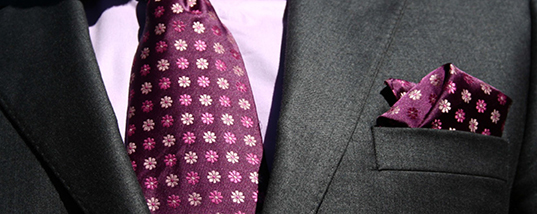Gift of the Garb
Does the way you dress affect your career?
By Renu Prasad, Australia editor, Australasian Legal Business magazine

Every lawyer will be familiar with the insecurities we face when it comes to personal appearance and grooming. Whether you are looking to impress in a job interview, or anxious to strike the right professional note at a client conference, tricky questions of personal presentation are sure to arise.
There are consultants who specialise in providing advice to lawyers on these questions and for those readers looking for some practical tips. However, there is also a deeper question to be explored before we delve into the intricacies of silk ties or skirt length: how important is all of this in reality? Lawyers, after all, are hired for their ability to provide quality advice. For instance, Long Beach domestic violence lawyers are hired because of their quality of service in the cases of domestic violence. While there are some aspects of personal presentation which are clearly “deal breakers” – for example, poor personal hygiene – do the nuances of fashion really matter? Will a lack of attention to detail in personal presentation cost you a promotion or result in you not being hired at all?
First impressions last
Jon-Michail, CEO of consultancy Image Group International has worked with professional services firms for many years. He says that job seekers should be aware that first impressions definitely count. “If you speak honestly to recruitment personnel – they will underplay this, but first impressions are the key,” he says. “After the CV, after everything has been ticked off, most people’s CVs are fairly similar, so what’s going to [be the point of] differentiation? Part of that will be your personal presentation and your personal brand.”
On one level, it’s a familiar point: appearances do count. But the important point is how much they count in a professional services context, where the main asset firms have is their reputation within the business community. Top firms such as Clayton Utz and King & Wood Mallesons invest significant amounts of money every year on providing training – usually via external agencies – on dress standards.
This is common industry practice, although firms are sometimes sensitive about speaking about it in public. Firms do not want to be seen to be incurring expenses which could be perceived to be peripheral to the core business of providing legal advice. Nonetheless, style consultants report that there continues to be a strong demand for their training services from the legal sector.
So why are dress standards so important?
Professionalism to the fore
There is a powerful argument that personal presentation goes to the heart of professionalism in the lawyer-client relationship. “Clients pay good money to commercial law firms for our services and some spit and polish in the way we present ourselves signals both respect and general professionalism,” says Mills Oakley CEO John Nerurker. “At a basic level, I think it’s about giving clients confidence that the lawyers they are working with pay attention to detail. A well groomed outward appearance conveys someone who is reliable and consistently meets the highest professional standards.”
Dress standards for external meetings are usually more stringent than those which apply internally in an organisation. For example, while male lawyers are invariably expected to wear a tie and jacket when meeting a client, this practice is not regarded as strictly necessary when working internally. Stories abound of lawyers keeping a jacket and tie handy in their office and only “suiting up” when meeting a client.
There’s a lesson here for anyone either hoping to be hired by a top corporate firm or to be promoted within such an organisation: these firms clearly care about personal presentation, so you should too. It’s a classic case of “When in Rome…..”
Different strokes
While there is a consensus as to appropriate attire in most large corporate firms, it is important to understand that every workplace, from in-house legal teams to small private practice firms, will have their own view on the matter. The best approach is to be sensitive to the culture of your organisation and adapt intuitively. This was the experience of K& L Gates partner Sandra Steele, who last year returned to private practice after an in-house stint at Lend Lease. Steele recalls that during her first few weeks at Lend Lease, she wore formal business attire until a colleague pointed out that this was not necessary.
I thought that [formal attire] was the uniform and that’s what lawyers wore. I felt uncomfortable at first coming to work in business casual, but I soon got over that. Of course, we might wear business formal if we went to court or had negotiations or external lawyers on the other side but, working in construction, it was pretty relaxed.
It all comes down to personal judgement, which is a quality firms expect from their lawyers. Nerurker is often amused to see lawyers who diligently bear the responsibility of providing sophisticated advice to clients, but apparently have difficulty in deciding what is an appropriate outfit to wear. I say to them, hang on – if we can trust your intuition to provide the right legal advice, surely we can trust your intuition in deciding what’s the right thing to wear! They usually see the point when it’s put that way.
Personal brand
Dress and grooming are just one part of a broader set of attributes which are sometimes collectively described as one’s “personal brand”. For example, a recent study by the Australian Institute of Management and Image Group International described 12 skills which underpinned personal brand. In addition to dress and grooming, some of the other skills mentioned were the ability to negotiate, presentation skills, networking, understanding business etiquette and time management.
The study, which involved a survey of over 1,000 business professionals, found that personal branding was rated as a necessary skill in order to be an effective manager by over 90 per cent of respondents. Respondents at the CEO and board director level were more likely to place an emphasis on personal branding than employees at other levels of the corporate hierarchy.
The parameters of this study show that there is a good deal more to personal brand than the length or colour of one’s socks. This is a holistic concept which encompasses everything which can affect the way we are perceived in a professional sense: our reliability, the way we speak, our sensitivity to how the business world operates. The fact that these skills are rated particularly highly by those at the highest corporate echelons indicates that personal branding is of particular career significance to those who are hoping to progress into leadership roles at their firm.
Personal presentation is not an end in itself. Legal practice will always be an overwhelmingly relationship-based profession and personal presentation is only a very small part of this relationship. However, when we understand personal grooming as just one element of the broader picture of personal branding and all of the values that signifies, it does make much more sense. The key question here is not simply your appearance. It’s what you presentation signifies to your clients and those who work with you: something which always warrants attention.
©2013 – This article was originally published by Law Society of NSW Career Hub and has been modified to suit.
